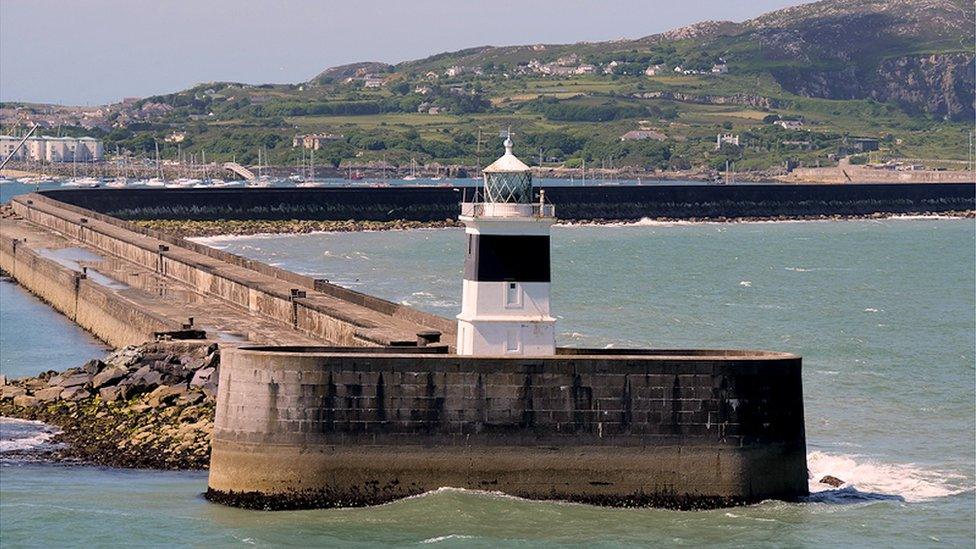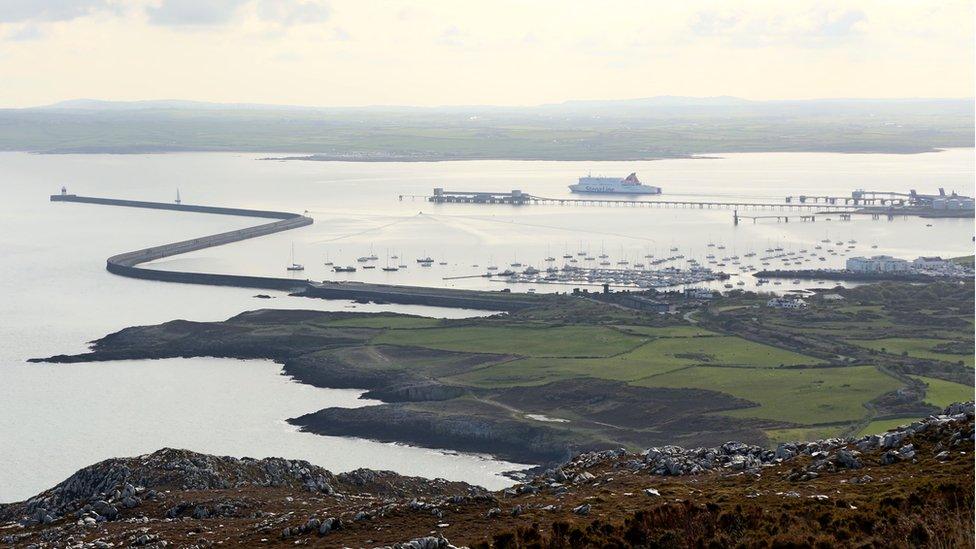Plans to save Holyhead port from breakwater breach submitted
- Published

Waves are eroding the breakwater's rubble mound base
Plans to repair damaged Victorian sea defences that protect a major ferry port and town have been submitted.
The 1.7-mile (2.4km) breakwater at Holyhead - the longest in Britain - is suffering from erosion to its rubble mound base, Anglesey council has said.
Plans submitted on behalf of the council say without the breakwater the ferry operations would not be viable.
A report has said the structure could be breached within 15 years unless necessary repairs are carried out.
Ferry company Stena Line, which owns the structure, estimated in 2013 that it was costing £150,000 a year in maintenance, the Local Democracy Reporting Service has reported.
The proposed refurbishment scheme is being jointly developed by the ferry company, Anglesey council and the Welsh Government.

The breakwater (left to centre) has protected the port and town of Holyhead since 1873
"The breakwater forms part of the essential infrastructure for the operation of the port, providing shelter from a more extreme wave climate to the berthing ferries and other vessels," notes the report.
"Without the breakwater it is likely that the wave conditions would increase to the point that the operation of the ferries is no longer viable, resulting in the closure of the port and the loss of the international link to Ireland for Wales and England."
- Published18 March 2019
